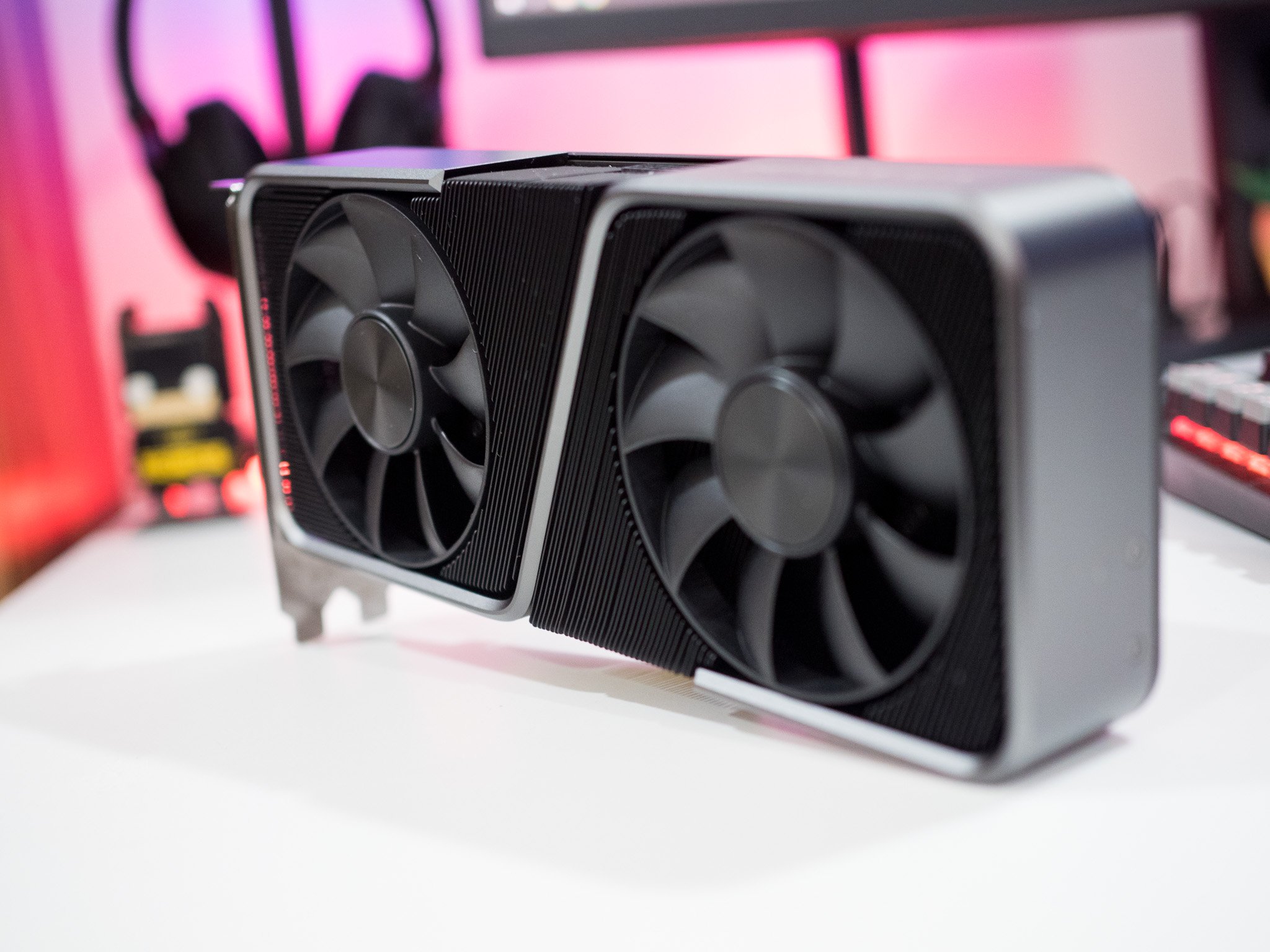AMD FidelityFX Super Resolution vs. NVIDIA DLSS: What's the difference?
 Source: Harish Jonnalagadda / Windows Key
Source: Harish Jonnalagadda / Windows Key
With the unveiling of AMD's FidelityFX Super Resolution at Computex, NVIDIA finally has some competition on the image upscaling front end. This also means that all of the best graphics cards volition now have access to 1 or the other technologies. If you're wondering how AMD FidelityFX Super Resolution (FSR) compares to NVIDIA DLSS, we intermission things down right here.
What is NVIDIA DLSS?
Starting with the tech that came showtime, NVIDIA's Deep Learning Super Sampling (DLSS) is something of a marvel. While supersampling has been effectually for a while equally an anti-aliasing method, DLSS (and especially the latest DLSS two.0) is a new accept. It's a proprietary technology that uses artificial intelligence to maximize frame rates while making your games look meliorate. When ray tracing and DLSS are combined, the results tin can exist specially impressive.
If a game is adult to be compatible with DLSS, it's cleaved downwards into what NVIDIA calls supersampled "perfect frames'' which are then examined by the supercomputer and neural network NVIDIA has created. This is initially washed at a lower resolution with a focus on anti-aliasing, but the concurrent runs through the frames focus more on sharpening the epitome with extra pixels for a higher resolution. The supercomputer looks at high-resolution perfect frames, compares them to following low-res frames, and makes adjustments to ultimately create some other high-resolution prototype. This is repeated thousands of times on NVIDIA's side to properly teach artificial intelligence. The knowledge is then fed to the GPU and its Tensor cores via driver updates.
 Source: Harish Jonnalagadda / Windows Central
Source: Harish Jonnalagadda / Windows Central
Whereas the first version of DLSS had to meet each game fed through the NVIDIA supercomputer, DLSS 2.0 has seen huge improvements. At that place's now one big network that tin handle all games, which should mean that more games will go the DLSS treatment. No matter what, the end result is beneficial to gamers looking to maximize frame rates while still having the game expect as good as possible.
Considering the frames are being rendered at a college resolution merely still being displayed on, say, your 1440p monitor, you're going to see a lot more detail without a noticeable outcome on frame rates. This allows gamers to crank upwardly the in-game settings and still encounter shine gameplay. And so why not use DLSS all the time? It'southward simply bachelor in select games, though the list is growing all the fourth dimension. And information technology's also available merely on NVIDIA's RTX 20- and thirty-series graphics cards with dedicated Tensor cores. If you're an AMD fan, FidelityFX Super Resolution is the rebuttal.
What is AMD FidelityFX Super Resolution?
AMD FidelityFX Super Resolution is certainly a mouthful, but it'due south already been shortened down to FSR. This is AMD's reply to NVIDIA DLSS, prepare to launch June 22, 2022. Whereas DLSS employs bogus intelligence and neural networks to achieve its goals, AMD is instead leaning on advanced spatial upscaling algorithms. At AMD'southward GPUOpen website, information technology'south stated that "it does non rely on history buffers or move vectors. Nor does it crave whatever per-game training." This is no doubt the biggest departure between 2 technologies that attempt to accomplish the same terminate goal.
Details are withal limited well-nigh the upcoming technology. What we do know is that FSR has support from 10 games studios and game engines with more on the way side by side year. We also know that there are four dissimilar quality presets bachelor, including Operation, Balanced, Quality, and Ultra Quality. This should let you to choose whether you demand to maximize frame rates or maximize image quality. And we too know that AMD is claiming FSR can deliver up to two times better performance in compatible games at a 4K resolution when using the Operation preset.
 Source: AMD
Source: AMD
Some other major deviation between DLSS and FSR is compatible hardware. NVIDIA'south DLSS is locked down to its RTX GPUs, but AMD's FSR is open-source and available on far more hardware. AMD says FSR will be enabled on all of its Radeon RX 6000, RX 5000, RX 500, and RX Vega GPUs. Information technology will too work with Ryzen CPUs and their integrated Radeon graphics. Not only that, simply it's too going to piece of work with modernistic NVIDIA GPUs, including GTX ten-series cards that aren't uniform with DLSS. Post-obit AMD'south principal announcement, information technology was also revealed that Radeon RX 470 and RX 480 GPUs will be uniform with FSR.
Whereas NVIDIA'due south DLSS is express to its PC-based GPUs, FSR is obviously branching out to Xbox consoles. As reported by IGN, a Microsoft spokesperson stated:
At Xbox, we're excited by the potential of AMD's FidelityFX Super Resolution technology as another not bad method for developers to increment framerates and resolution. We volition have more to share on this soon.
The Xbox Series X|S Game Dev Kit gained access to some of the AMD FidelityFX graphics tools in April, so this should be a huge boon for the consoles.
Which technology is ameliorate?
Whether FSR or DLSS is the "better" technology remains to be seen. They both aim to reach the aforementioned goal — boosting frame rates and image quality without a major operation hit — only they exercise and so with different processes. Keep in listen that the outset version of DLSS was nowhere nigh equally good as DLSS 2.0 on about all fronts, and FSR will likely have some kinks to work out before it reaches maturity. Yet, this is an exciting development for all gamers, and nosotros tin't wait to test it out.

Future plans for FFXIV
Post-launch roadmap for Final Fantasy 14: Endwalker revealed
The latest Letter from the Producer livestream has just aired, and it comes with a plethora of news for Final Fantasy Fourteen. This includes plans for updating all the main scenario quest dungeons, improving the graphics, implementing new sidequests, and much more than.
Source: https://www.windowscentral.com/amd-fsr-vs-nvidia-dlss
Posted by: chentropir.blogspot.com


0 Response to "AMD FidelityFX Super Resolution vs. NVIDIA DLSS: What's the difference?"
Post a Comment